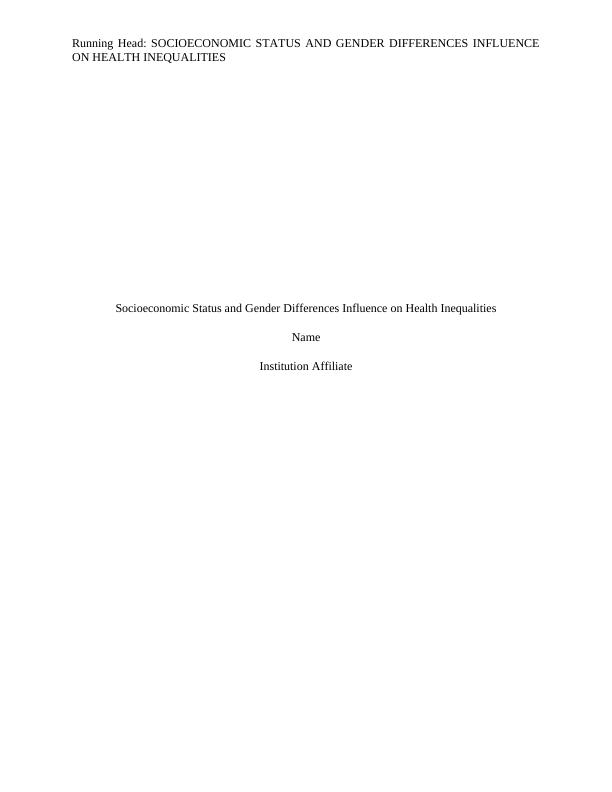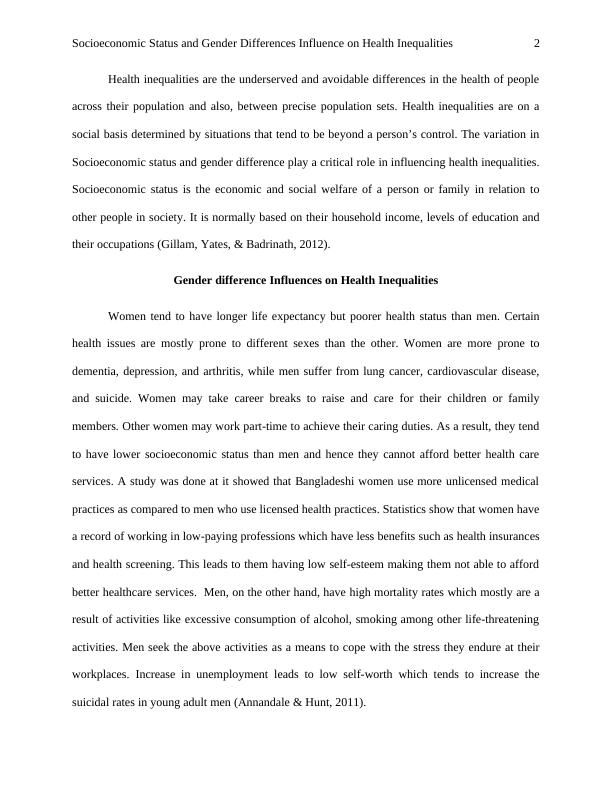Socioeconomic Status and Gender Differences Influence on Health Inequalities
Explain how inequalities in health can be influenced by variations related to socioeconomic status and to gender differences.
4 Pages814 Words35 Views
Added on 2023-01-10
About This Document
This article examines the influence of socioeconomic status and gender differences on health inequalities. It discusses how these factors contribute to disparities in health outcomes and explores the impact of income, education, and occupation on health. The article also highlights specific health issues that affect women and men differently and discusses the role of healthcare access in addressing health inequalities.
Socioeconomic Status and Gender Differences Influence on Health Inequalities
Explain how inequalities in health can be influenced by variations related to socioeconomic status and to gender differences.
Added on 2023-01-10
ShareRelated Documents
End of preview
Want to access all the pages? Upload your documents or become a member.
The Social Impact of Inequality on Gender: Mental Health, Education, and Employment
|10
|2584
|363
Impact of Socio-Economic Status on Health: UK Perspective
|7
|2096
|40
Domestic Violence and Socioeconomic Factors
|7
|1807
|153
ASE1201-Population Health, Healthcare and socioeconomic situation
|9
|2304
|47
Poverty and inequality implications for health and social care
|10
|3975
|442
(Solved) Health Inequality Report
|12
|2528
|64


